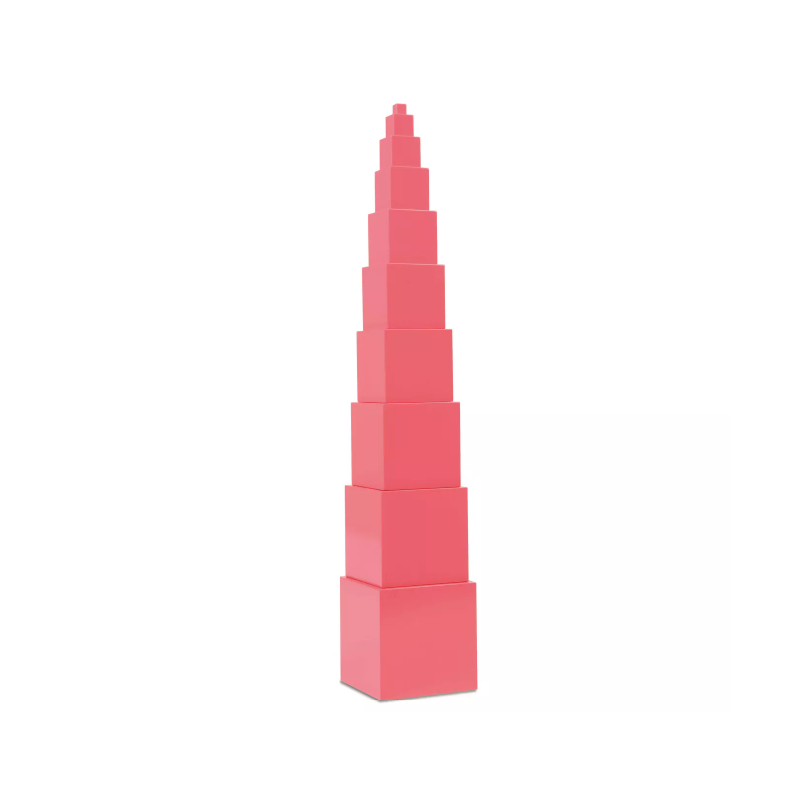Traditional grammar lessons often leave children confused and disengaged.
By the time kids reach ages 6 to 9, they are developmentally ready to explore the mechanics of language. Yet worksheets and rote memorization fail to spark genuine interest or deep understanding. How can we make sentence structure meaningful? How do we help children not just learn grammar but truly enjoy it? And how can we support their growing independence and reasoning through language?
Montessori Sentence Analysis provides a thoughtful, hands-on solution. Designed for children in the second plane of development, this method transforms grammar into a process of discovery. Through tactile materials, symbolic representations, and real-sentence exploration, children actively analyze how language functions. They are not merely identifying parts of speech; they are uncovering how each word contributes to meaning. This interactive approach nurtures confidence, critical thinking, and expressive language skills.
This practical guide will show you how to teach Montessori Sentence Analysis to children ages 6 to 9 using proven strategies, step-by-step techniques, and engaging activities that inspire learning.

The Developmental Readiness of Children Ages 6 to 9
Children between the ages of 6 to 9 are in a sensitive period for intellectual growth. This stage marks a shift from concrete experience to abstract thinking. They become more curious, capable of logical reasoning, and increasingly interested in understanding how things work, including language.
At this age, children begin to notice patterns in speech and writing. They often ask questions about sentence structure, word choice, and the meaning behind what they read and hear. Instead of accepting information passively, they want to explore it, analyze it, and construct meaning on their own terms. Montessori Sentence Analysis responds directly to this developmental need by encouraging hands-on investigation through symbolic tools and materials.
Introducing sentence analysis during this phase supports their natural drive to understand and organize the world around them. The Montessori approach gives them concrete ways to grasp abstract concepts, helping them build a strong foundation in grammar, expression, and critical thinking.
What Is Montessori Sentence Analysis?
Montessori Sentence Analysis is a child-centered approach to grammar that helps children understand how sentences are structured by focusing on the function of each word. Instead of memorizing grammatical terms or rules, children explore the meaning and purpose behind language. This approach transforms grammar into an active, engaging process of discovery.
At its core, Montessori Sentence Analysis asks a simple yet powerful question: What is this word doing in the sentence? This shift from naming to understanding encourages children to think critically and logically about how language works. They begin to see sentences not just as a series of words, but as systems where every element has a role and a relationship.
By focusing on word function and meaning, Montessori Sentence Analysis supports deeper comprehension, stronger communication skills, and a lasting appreciation for the structure of language. It empowers children to become not just users of language, but thinkers within it.

How to Teach Montessori Sentence Analysis Step by Step
Montessori Sentence Analysis starts with simplicity, but even for children ages 6 to 9, it quickly becomes an exciting journey into the structure of language. At this stage, children are naturally curious, eager to understand how things work, and motivated by discovery. Exploring sentences feels like solving a riddle. Who is doing the action? What is being done? What else can I add to make this sentence more interesting?
Sentences such as “The frog jumps.” หรือ “A small bird sings.” become the foundation for playful and thoughtful exploration. Children begin to add detail, ask questions, and express themselves more clearly. With careful guidance, Montessori Sentence Analysis can unfold as a joyful, step-by-step process that empowers young learners to see language as both a system and a tool for expression.
Here is how to teach it in a clear, developmentally appropriate way:
1. Start with Simple Sentences
Begin with short, complete sentences that clearly include a subject and a verb.
Examples:
- The cat sleeps.
- The wind blows.
- The boy runs.
At this early stage, avoid complex or abstract language. The goal is clarity and confidence. Write or print the sentence on a strip and read it aloud with the child.
2. Ask Guiding Questions Instead of Giving Answers
Instead of telling the child what each word is, ask:
- Who or what is this sentence about?
- What is happening?
- Is there someone or something receiving the action?
These questions encourage the child to discover meaning through analysis rather than memorizing rules. Let them verbalize their thoughts and point to the parts of the sentence as they answer.
3. Introduce Symbols Gradually
Once the child has identified the key parts of the sentence, bring out the sentence analysis materials.
- Use a black circle to represent the subject.
- Use a red arrow pointing to the verb.
- Add a blue arrow if there is a direct object.
Have the child place the symbols directly under the corresponding words. The physical act of placing the pieces reinforces understanding and brings abstract concepts into the real world.
4. Encourage Independent Analysis
After several guided examples, let the child try to analyze sentences on their own using familiar vocabulary and sentence structures. Provide new sentences that are still simple but varied. Observe their confidence and thought process. Avoid correcting too quickly and allow them to self-correct through reasoning.
5. Add More Elements Over Time
Once the child is comfortable with subjects, verbs, and objects, slowly introduce new sentence components.
- Adjectives (The small dog runs.)
- Adverbs (The cat sleeps quietly.)
- Prepositional phrases (The bird sings in the tree.)
Explain each new element through questioning and discovery. Ask what extra information is being added and what word it describes. Avoid rushing and let each new concept settle in through repetition and exploration.
6. Support with Writing and Sentence Creation
Invite children to write their own sentences using words they know. Then, analyze them together using the materials. This strengthens both grammar awareness and written expression. You can also make this playful by turning it into a game such as asking them to create a sentence for you to figure out.
7. Revisit and Deepen Understanding Regularly
As students progress, revisit previously learned structures using more detailed or interesting content. Review is essential in Montessori learning. Add gentle complexity over time but always ensure understanding before moving forward. Keep the work joyful and meaningful.
Montessori Sentence Analysis for children ages 6 to 9 is not about labeling words with grammar terms. It is about helping them see how words work together to build meaning. Through simple steps, clear guidance, and hands-on tools, sentence analysis becomes a path to better thinking, better writing, and better communication.

Montessori Materials for Sentence Analysis
Montessori Sentence Analysis relies on simple, symbolic materials that help children make sense of sentence structure in a concrete way. These materials are not just visual aids; they guide action, discovery, and understanding through physical interaction.
Here are the key components commonly used when analyzing basic sentences with children ages 6 to 9:
- Black Circle: Represents the subject of the sentence. It helps children identify who or what the sentence is about.
- Red Arrow: Represents the verb or action. Its direction shows movement from the subject to the action.
- Blue Arrow: Introduced when there is a direct object. It shows the connection between the verb and the receiver of the action.
- Sentence Strips or Cards: Used to display sentences for analysis. They may be printed or handwritten and often accompany oral prompts or games.
- Additional Symbols (as needed): In more advanced stages, colored shapes may represent adjectives, adverbs, and other modifiers, though these are introduced gradually.
These materials are typically introduced one at a time during specific lessons, rather than all at once. Their meaning becomes clear through repeated, guided use. Over time, children learn to associate each shape and color with a function in the sentence, building a visual and logical understanding of language.
Explore Premium Montessori Materials for Young Learners
Bring hands-on learning to life with beautifully crafted Montessori materials designed to support your child’s natural development. From math tools to sensorial classics like the Pink Tower, each piece encourages independence, focus, and joyful discovery. Perfect for parents and educators looking to create an authentic Montessori environment at home or in the classroom.
 Browse Montessori Materials
Browse Montessori Materials
Setting Up the Montessori Environment for Grammar Work
A thoughtfully prepared environment is essential for supporting Montessori Sentence Analysis. For children ages 6 to 9, the learning space should invite exploration and concentration, allowing them to interact with language in a calm, structured way.
Create a quiet corner or floor space where children can lay out sentence strips and analysis symbols. This area should include a small rug, trays for materials, and a shelf with clearly labeled containers. The goal is to encourage independent work while keeping everything accessible and orderly.
Within this space, children are introduced to analyzing simple sentences using hands-on materials. As they progress, they begin to understand how to break down a sentence into its parts, gradually building the ability to recognize structure and meaning. With repeated practice, they move from simple identification to more confident grammatical analysis, always at their own pace.
Writing tools and blank cards can be added to support sentence creation. This gives children the opportunity to analyze their own sentences, deepening their understanding through self-expression. Over time, this environment becomes a place where language is not just studied but experienced and enjoyed.
Guiding Children Toward Language Mastery Through Montessori Sentence Analysis
Montessori Sentence Analysis empowers children ages 6 to 9 to explore language as a system they can understand and use. By helping them break down a sentence into its essential parts, students begin to see how structure shapes meaning, laying the groundwork for confident expression and deeper comprehension.
This process moves beyond traditional grammar drills and invites children to engage in meaningful grammatical analysis, reflecting on how words connect in a sentence. Over time, they develop an intuitive sense of sentence structure analysis and a love for crafting their own writing.




